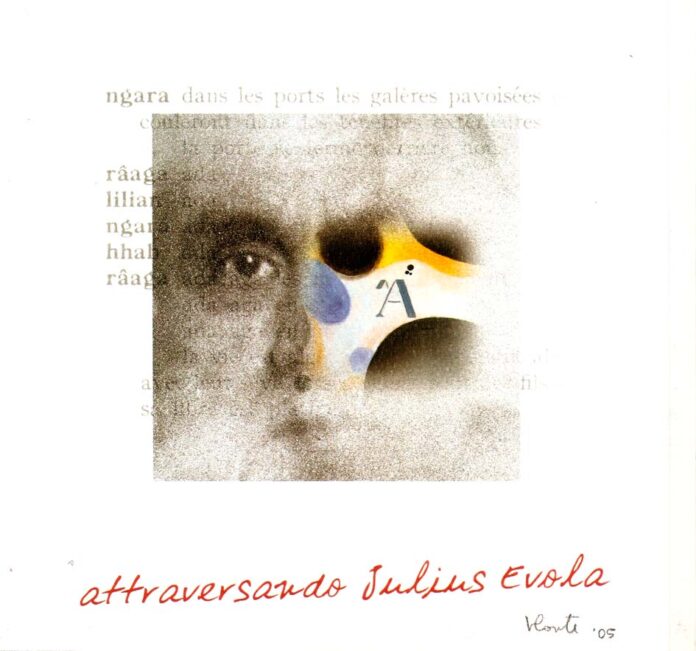The boundless word of Julius Evola, in the Dada movement, is to be understood in a total extension. It is not restricted only to the aspects of verbal poetry, but also to its trespassing on the inner sound-noise and on the artistic image. Naturally, his word, used in various expressive possibilities, always implies the theoretical and the thought-related word. This is what occurs in the edition of Abstract Art (Collection Dada, 1920), which is considered his first publication. In fact, theoretical position, 10 poems, 4 (visual) compositions coexist in it.
This boundless creation requires different existences in order to find the conscious totality of its procedure. The idea of total art or synthesis of arts is present in the historical avant-gardes which Julius Evola went through: Futurism and Dada. The author himself refuses to distinguish or separate the significant moments of his own cultural path. He claims its overall meaning and the continuity between artistic expression and philosophical path. “Basically, there is continuity through all the various phases of my activity”. In a similar way, he does not delimit the boundaries of the artistic expression: “Whoever has only one means of expression is not an artist”.
The alphabetic letter (recognizable or mentioned) is present in Evola’s Dada art: individually, in dialectic with other letters and even within a word. According to the artistic representation, this form stands for a presence with multiple meanings. An example is the use of the letter A, visible in the pen drawing Composition no. 3 (1919), published in Abstract Art (1920). The A becomes a central presence in Composition no. 19 (oil on cardboard, 1918-20), in which alchemy is expressed through the theme of representation and pictorial expression, in its making and creating parallels with the royal art.
In the Composition (Landscape) Dada n. 3 (oil on canvas, 1920-21) the large letter D and the letter A, repeated in horizontal succession, probably allude to the letters of Dada, becoming a reference point. In the same work, the word évidemment is repeated by the voices of Hhah and Ngara in the poem La parole obscure du paysage intérieur.
Evola’s accession to Dada and the release of Abstract Art took place in 1920. To celebrate the centenary, some intellectuals gathered in a video conference at the beginning of December.
You can also read:
Julius Evola and Maria de Naglowska, the real and the fantastic








